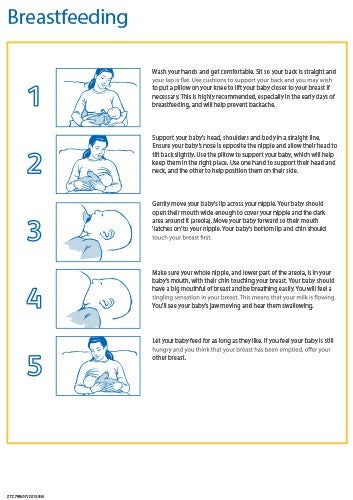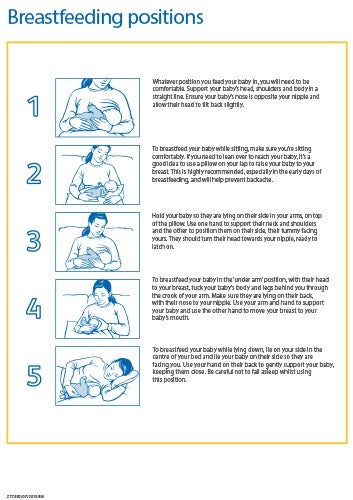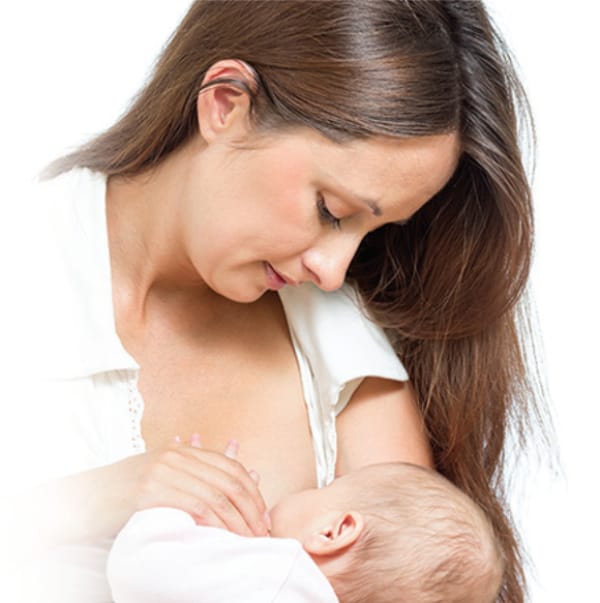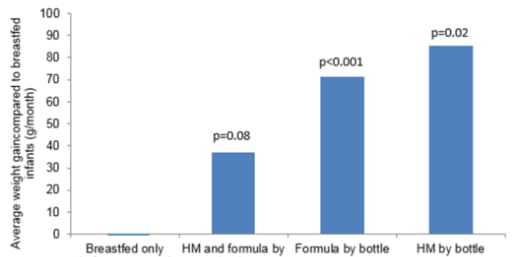How to breastfeed a baby
Overview
Download this guide, print and give to parents
This article provides a step-by-step guide to on how to breastfeed a baby. Remember, the SMA Careline® team offers 24/7 support to both healthcare professionals and mums who are breastfeeding.
- Wash hands and make yourself comfortable
- It's always best to have clean hands before starting to breastfeed
- When sitting down to breastfeed, mum should make sure her back is straight and her lap flat
- A couple of cushions behind the back can help prevent backache and a cushion on the knees will help bring the baby closer to mum’s breast
- Keep a glass of water close by – breastfeeding can make mum thirsty
- Getting the right position
- Baby should be laid on the cushion on mum’s lap with their head supported and their head, shoulders and body in a straight line
- Mum should make sure baby’s nose is opposite her nipple and allow their head to tilt back, still supporting it with one hand while she uses the other to hold baby on its side
- Lift up
- When baby's nose is in line with mum’s nipple, their mouth should be wide open, enough to cover the nipple and the lower part of the dark areola around it
- If they don't do this straight away, mum should gently move their head and brush their top lip across her nipple
- Latch on
- Although new mums might think that latching on might sound a bit scary, they can be reassured that it really isn't
- When the baby is successfully latched on, their chin should be touching mum’s breast and they should have a big mouthful of breast
- If mum supports her breast, this may help the baby; it’s also important to ensure that they are breathing easily
- Feeding
- When a mum’s milk begins to flow (known as the let-down reflex), she'll hear her baby swallowing and see their jaw moving
- As the flow increases, mum may feel some tingly sensations in her breast – this is all quite normal
- Full yet?
- It is important to let the baby feed for as long as they want so they have enough to satisfy both their hunger and their thirst
- The more a baby drinks, the more milk a mum’s breasts produce
- If mum’s breast feels empty but baby still wants more milk, she can offer the other breast; aim for consistency with newborn breastfeeding positions
- All done
- A baby will let mum know when they have finished – either by letting go of the breast or falling asleep
- Once mum has successfully breastfed her baby, it's time to wind or burp them. Mum should keep a muslin cloth over her shoulder as a little milk can often come up
You can learn more about baby’s early feeding cues, the little signs they make to tell if they’re hungry or full, in a series of videos on our SMA® Baby website.
Resources


Breastfeeding positions
Download breastfeeding positions factsheets. Available in multiple languages


